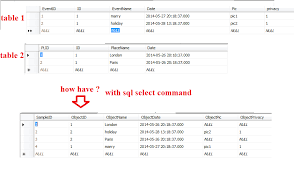Joining tables in SQL is a fundamental skill for anyone working with databases. It allows you to combine data from two or more tables based on related columns, making it easier to analyze and retrieve meaningful information. This guide will explain the different types of joins in SQL, provide examples, and offer best practices for using joins effectively.
Understanding Joins in SQL
Joins are SQL operations that combine columns from two or more tables based on a related column between them. There are several types of joins, each serving a different purpose and yielding different results.
Types of Joins
1. INNER JOIN
An INNER JOIN returns records that have matching values in both tables. This is the most common type of join used in SQL queries.
Syntax:
2. LEFT JOIN (or LEFT OUTER JOIN)
A LEFT JOIN returns all records from the left table (table1), and the matched records from the right table (table2). If there is no match, the result is NULL on the side of the right table.
Syntax:
3. RIGHT JOIN (or RIGHT OUTER JOIN)
A RIGHT JOIN returns all records from the right table (table2), and the matched records from the left table (table1). If there is no match, the result is NULL on the side of the left table.
Syntax:
4. FULL JOIN (or FULL OUTER JOIN)
A FULL JOIN returns all records when there is a match in either left (table1) or right (table2) table records. If there is no match, the result is NULL from the non-matching side.
Syntax:
5. CROSS JOIN
A CROSS JOIN returns the Cartesian product of the two tables, meaning it returns all possible combinations of rows from the tables.
Syntax:
Example:
A SELF JOIN is a regular join but the table is joined with itself.
Syntax:
Best Pracices for Using Joins
- Use Aliases: Table aliases can make your SQL queries easier to read and write.
- Qualify Column Names: Always qualify column names with their table names or aliases to avoid ambiguity.
- Minimize the Use of FULL JOIN: FULL JOINs can be resource-intensive, so use them only when necessary.
- Ensure Indexes on Join Columns: Indexes on columns used in join conditions can significantly improve query performance.
- Understand the Data: Know your data and the relationships between tables to choose the appropriate join type.
Conclusion
Joining tables in SQL is a powerful way to combine and analyze data from multiple sources. By understanding the different types of joins and following best practices, you can write efficient and effective SQL queries. Whether you are dealing with INNER JOINs, LEFT JOINs, or any other type, mastering joins will greatly enhance your ability to work with relational databases.
For more detailed guides on SQL and other database management topics, visit howtojoin.org. We provide the latest and most accurate information to help you achieve your goals.


